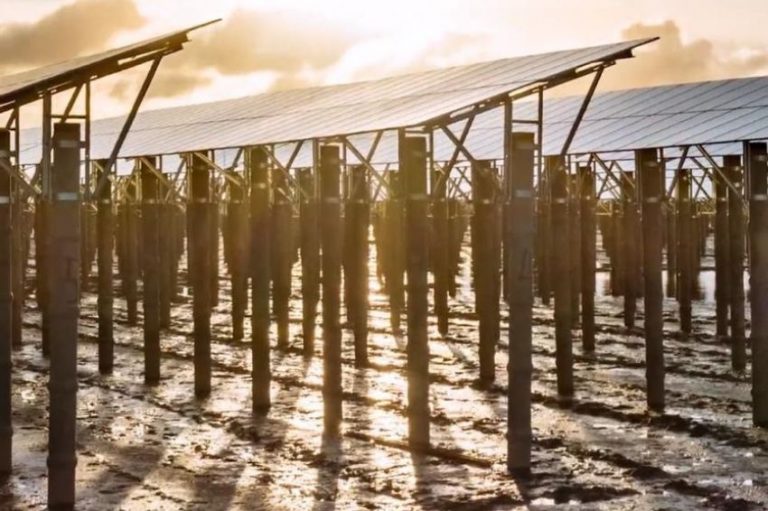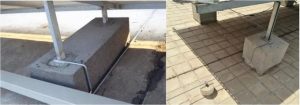The working environment of a photovoltaic plant is relatively complex and subject to extreme conditions such as high or low temperature, humidity, salt spray and heavy sand, among other things. These aggressive conditions can impact the reliability and longevity of the photovoltaic system.
More and more photovoltaic plants are being built on water, in the desert and in coastal areas, places where operating conditions are more aggressive than elsewhere.
After 2 or 3 years after the construction and start of operation of the solar plant, extreme environments, such as those mentioned, can have serious consequences on the equipment that makes up photovoltaic systems such as electrical panels, string boxes, fixing structures and inverters.
This article analyzes the impact of salt spray and high humidity environments on the operation of solar plants and highlights some solutions.
Impact of salt spray and high humidity environment
Salt fog contains a large amount of chloride ions, which can easily penetrate the protective layer of a metal surface and cause an electrochemical reaction with the contact metal, causing product failure.
Solar plants built along the coast are susceptible to the effects of high salinity and humidity in the air.
Outdoor salt spray particles and moist air affect components, cables (especially ground cables), metal supports, inverters and electrical panels.
Furthermore, high temperature and high humidity environments also affect photovoltaic systems in the following aspects:
- In environments with large temperature differences, such as beaches, mountains and other areas, water vapor evaporates and condenses.
- In places with high environmental humidity, such as lake areas, coastal areas, etc., the surrounding air is humid and it is easy to cause condensation inside the equipment. This causes indoor humidity and can lead to fires due to poor electrical insulation.
- Exposed conductors are easily corroded in a high salt and moisture environment, which increases impedance and leads to poor contacts..
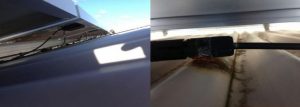
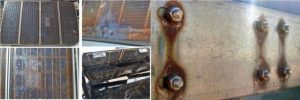
If salt fog and water vapor penetrate electrical panels or inverters, long-term buildup will corrode the internal structure of equipment and cause component damage.
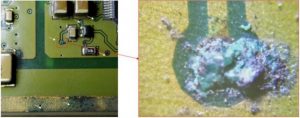

Prevention of corrosion of materials and equipment
The selection of components must take into account their protection capacity
The equipment chosen must have strict levels of anti-corrosion protection. Equipment such as inverters and distribution boxes used in areas with high salinity or high humidity need to have higher levels of protection and anti-corrosion designs than in other areas.
It is recommended to use inverters and boxes with IP65 or higher protection. This level of protection effectively prevents the entry of external moisture.
Electrical panels must have a galvanized box, covered with anti-corrosion paint and completely airtight.
Additionally, the inverter's printed circuit board and electronic components need to have a protective film, glue, or paint coating to protect against moisture, salt spray, and mold.
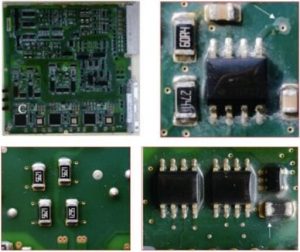
The inverter needs to pass temperature and humidity tests and corrosion resistance tests. The manufacturer must require information related to the tests the equipment has undergone and the certifications it has.
Solis inverters, for example, undergo cyclical high temperature and high humidity tests. The tests are initially carried out at room temperature (25 ºC) and humidity of 62%. The equipment then undergoes a 1000-hour operating test at a temperature of 85 ºC and humidity of 85%. The tested equipment must function correctly after the tests have been carried out.

It is also necessary to pay attention to the quality of products such as cables, metal structures and string boxes. Choose photovoltaic components, equipment and metal structures that have anti-corrosion treatments.
Some special care must also be taken with the installation method. The metal parts of the cables must not be exposed to air. The electrical terminals must be shielded and adjusted to avoid contact with the metal surface.
Protective treatment during installation and construction
AC, DC and grounding cables need to be placed in PVC conduit or buried in the ground for protection and to avoid the effects of abrasion and salt spray.
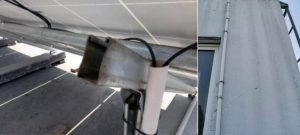
Metallic structures and grounding cables must be painted with anti-corrosion paint or must receive galvanized treatment.
These elements must be inspected and maintained at regular intervals. Corrosion points, when identified, must be eliminated to avoid deterioration of the elements over a prolonged period.
Special attention must be given to the use of aluminum and zinc (Al/Zn) screws in contact with steel parts, to avoid electrochemical corrosion due to contact between different metals.
Plastic gaskets can be added to isolate the two metals and prevent contact corrosion.
For electrical panels (AC or DC string box) it is recommended to use non-flammable insulating blanket or foam to improve protection and prevent the entry of water vapor.
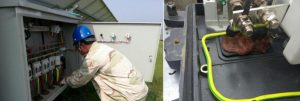
Summary
Environments with salt fog and high humidity can cause major corrosion problems and seriously affect the safety and durability of photovoltaic plants.
In these environments, special attention must be paid to equipment selection, construction, operation and maintenance to improve operational stability, reduce failures and extend service life.
The opinions and information presented are those of the author and do not necessarily reflect the opinion of Canal Solar.


